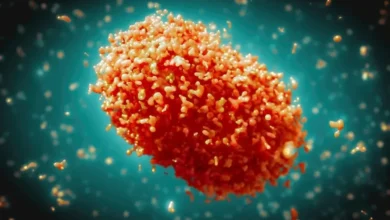Decoding the Tiny Terror: A Look at Viruses
Introduction
Viruses are microscopic infectious agents that can only replicate inside the living cells of an organism. They are composed of genetic material, either DNA or RNA, encapsulated in a protein coat called a capsid, and in some cases, an outer lipid envelope. Viruses are unique because they straddle the line between living and non-living entities, relying entirely on host cells for reproduction. This dual nature makes them fascinating yet often dangerous players in the biological world.
Types of Viruses
Viruses can be classified based on several criteria, including their genetic material, structure, host range, and replication method. Here are the main types:
- DNA Viruses: These viruses have DNA as their genetic material. Examples include:
- Herpesviruses: Cause diseases like herpes simplex and chickenpox.
- Adenoviruses: Commonly cause respiratory infections.
- RNA Viruses: These viruses have RNA as their genetic material. Examples include:
- Influenza Viruses: Cause the flu.
- Coronaviruses: Cause diseases like COVID-19 and SARS.
- Retroviruses: A subclass of RNA viruses that reverse transcribe their RNA into DNA once inside the host cell. Examples include:
- HIV: Causes AIDS.
- Single-stranded vs. Double-stranded Viruses: Depending on whether their nucleic acid is single or double-stranded. Examples include:
- Parvoviruses: Single-stranded DNA viruses.
- Reoviruses: Double-stranded RNA viruses.
- Bacteriophages: Viruses that infect bacteria. Examples include:
- T4 Phage: Infects Escherichia coli.
Uses of Viruses
While often associated with diseases, viruses also have beneficial applications, particularly in science and medicine.
- Gene Therapy: Viruses are used as vectors to deliver genetic material into cells to treat genetic disorders. For example, adenoviruses and lentiviruses are commonly used in gene therapy.
- Vaccines: Some vaccines use weakened or inactivated viruses to elicit an immune response. Examples include:
- Measles, Mumps, and Rubella (MMR) Vaccine.
- Polio Vaccine.
- Phage Therapy: Bacteriophages can target and destroy antibiotic-resistant bacteria, offering an alternative to antibiotics.
- Research Tools: Viruses are used in molecular and cellular biology to understand cell functions and gene expression. For instance, the CRISPR-Cas9 system, used for gene editing, was derived from a bacterial defense mechanism against viruses.
Harmful Effects of Viruses
Despite their uses, viruses are often harmful and can cause a wide range of diseases in humans, animals, and plants.
- Human Diseases:
- Influenza: Caused by the influenza virus, leading to respiratory illness.
- COVID-19: Caused by SARS-CoV-2, resulting in a global pandemic with severe respiratory and systemic complications.
- HIV/AIDS: Caused by the Human Immunodeficiency Virus (HIV), attacking the immune system and leading to acquired immunodeficiency syndrome (AIDS).
- Animal Diseases:
- Rabies: Caused by the rabies virus, fatal if untreated.
- Feline Leukemia Virus (FeLV): Causes immunosuppression in cats.
- Plant Diseases:
- Tobacco Mosaic Virus (TMV): Affects tobacco and other plants, causing mottling and discoloration.
- Potato Virus Y (PVY): Reduces crop yields and quality.
- Economic Impact: Viral outbreaks can have significant economic repercussions, affecting agriculture, livestock, and human health sectors, leading to losses in productivity and increased healthcare costs.
- Evolutionary Impact: Viruses can drive the evolution of their hosts through selective pressure, leading to genetic diversity and the emergence of new traits, which can be both beneficial and detrimental.
Conclusion
Viruses are integral to the biological ecosystem, influencing the evolution of species, the dynamics of ecosystems, and human society. While they pose significant challenges due to their capacity to cause diseases, they also offer remarkable tools for scientific and medical advancements. Understanding viruses, their types, uses, and harmful effects is crucial in leveraging their potential benefits while mitigating their threats. The ongoing study of viruses continues to reveal new insights and applications, emphasizing the complexity and duality of these fascinating entities.
